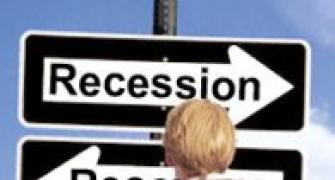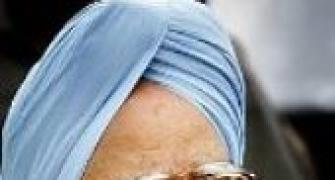The Reserve Bank of India Governor Duvvuri Subbarao's caution that the central bank will intervene if foreign inflows are 'lumpy and volatile' has calmed the rupee a bit. The local currency on Monday closed at 44.41 per dollar, compared to 44.44 per dollar on Friday. The rupee, which has gained about 5.7 per cent since the beginning of September, traded at its five-month high.
So far, the central bank has not intervened directly because the country's current account deficit in the June quarter widened three-fold from a year earlier and the nation needs more capital to fund its infrastructure and other projects.
While addressing global central bankers at the International Monetary Fund in Washington, Subbarao sounded the alert as September received more portfolio inflows that any other month on record.
This year, foreign institutional investors have so far purchased $21.4 billion of stocks, the highest in any year since such investments were permitted in 1992. FIIs have bought $10.5 billion bonds since January, compared to a total investment of almost $18 billion until now. Adding to the inflows are investments in share sales by local companies. Foreign exchange dealers anticipate another $2 billion inflow when state-owned Coal India hits the market with its initial public offering.
"India is unlikely to impose a tax on inflows,'' said Madan Sabnavis, chief economist at Care Ratings. "Only Brazil has tried using the tax. Such taxes get adjusted as costs of operation and may not necessarily remain a deterrent. Anyway, the flows are not so large.''
RBI has neither purchased nor sold any dollar since last December, according to its September monthly bulletin. The move ties in with the central bank's focus on controlling inflation. Any purchase of dollar to prevent the rupee from appreciating would result in adding more rupees to the banking system, thus working almost to the contrary of its policies.
Foreign exchange reserves stood at $294 bn on Oct 1
"The statement from the governor is like a verbal intervention,'' said S Kanjilal, chief executive officer at Forexserve Risk Management Consultants. "India could be facing issues of huge inflows just like what other BRIC (Brazil, Russia, India And China) countries are facing. Some inflows can cause short-term imbalances.''
A stronger rupee after a point will hit exporters, make some imports cheaper, and hurt the domestic industry. Also, exports are yet to recover from the 2008-09 global economic slowdown as the advanced economies in the West are still recovering. RBI seemed to be comfortable at around 44 per dollar level, he said. Through an intervention in the spot market, RBI could also take care of forwards, he said.









